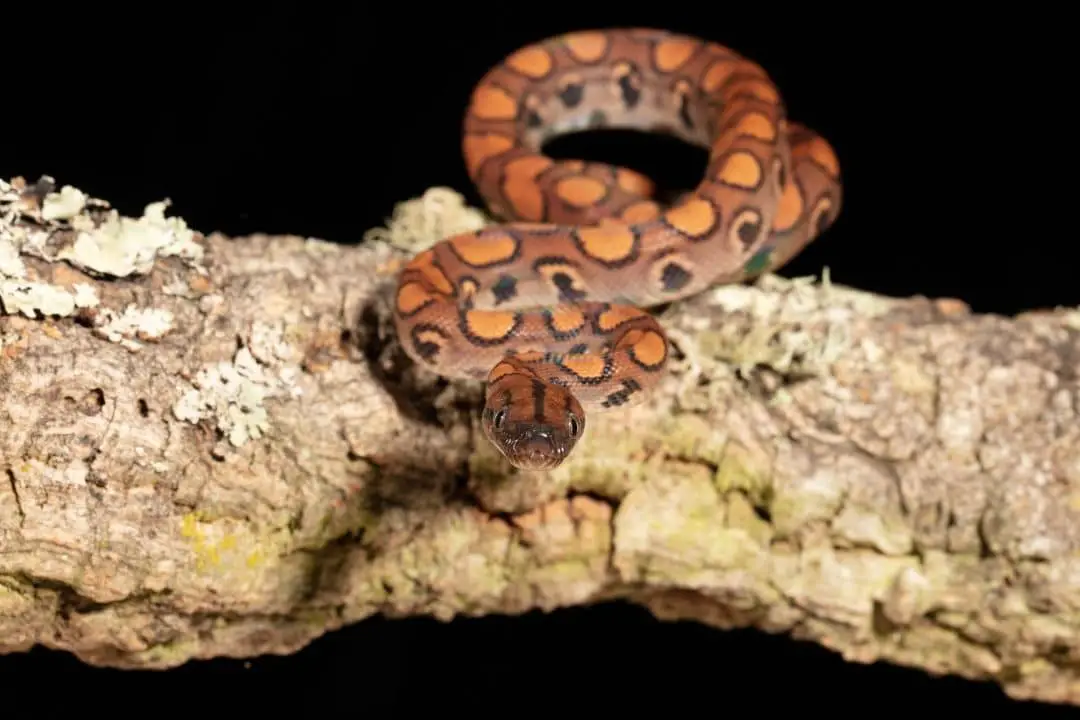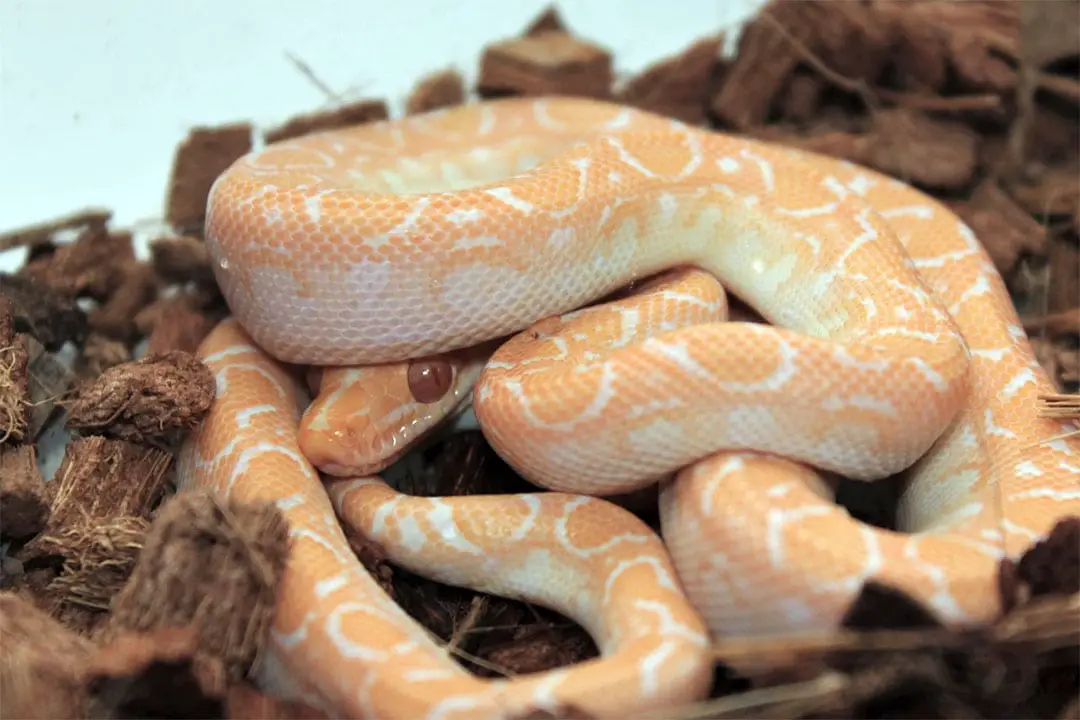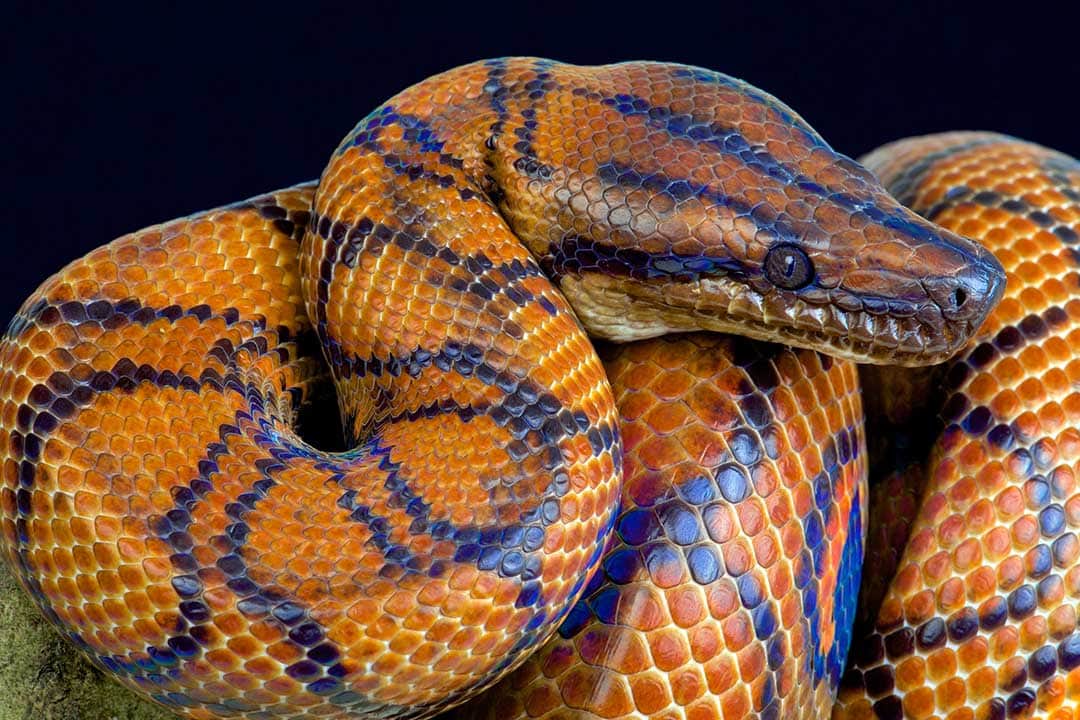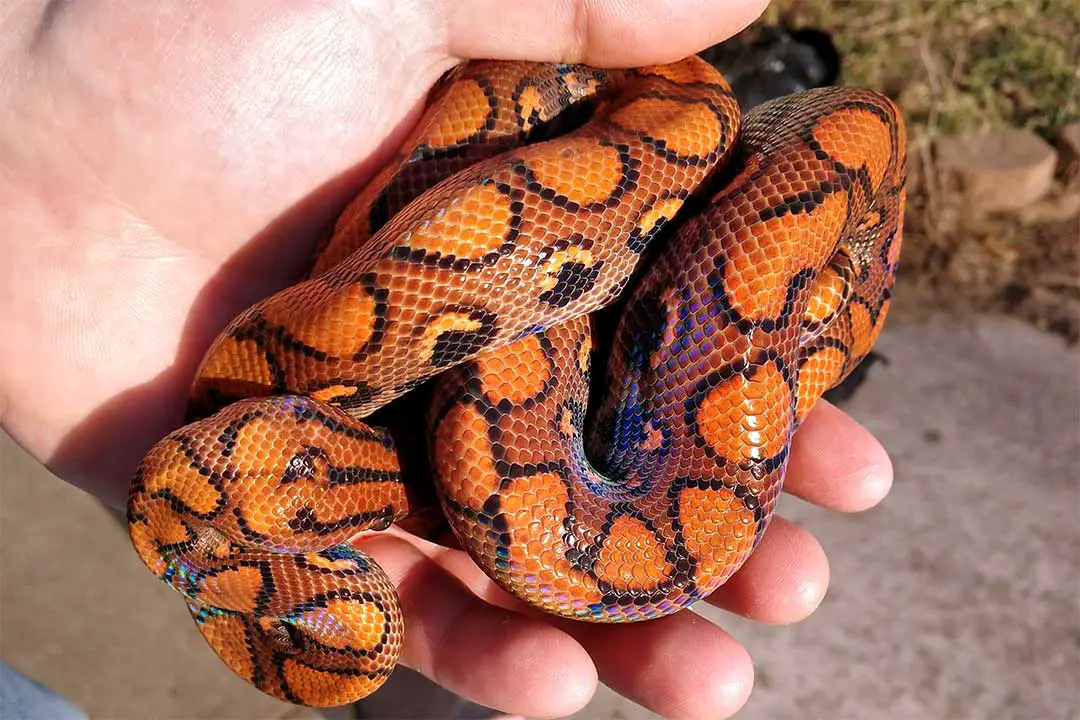The Brazilian rainbow boa (Epicrates cenchria) is a beautiful animal. These snakes are known for the rainbow sheen of their scales.
If you are considering one for a pet, you should know how long your pet will live.
How long does a Brazilian Rainbow Boa live?
On average, a captive Brazilian rainbow boa will live for over 20 years. Thanks to easy access to food and veterinary care, captive snakes live longer and healthier lives than their wild counterparts.
Wild Lifespan
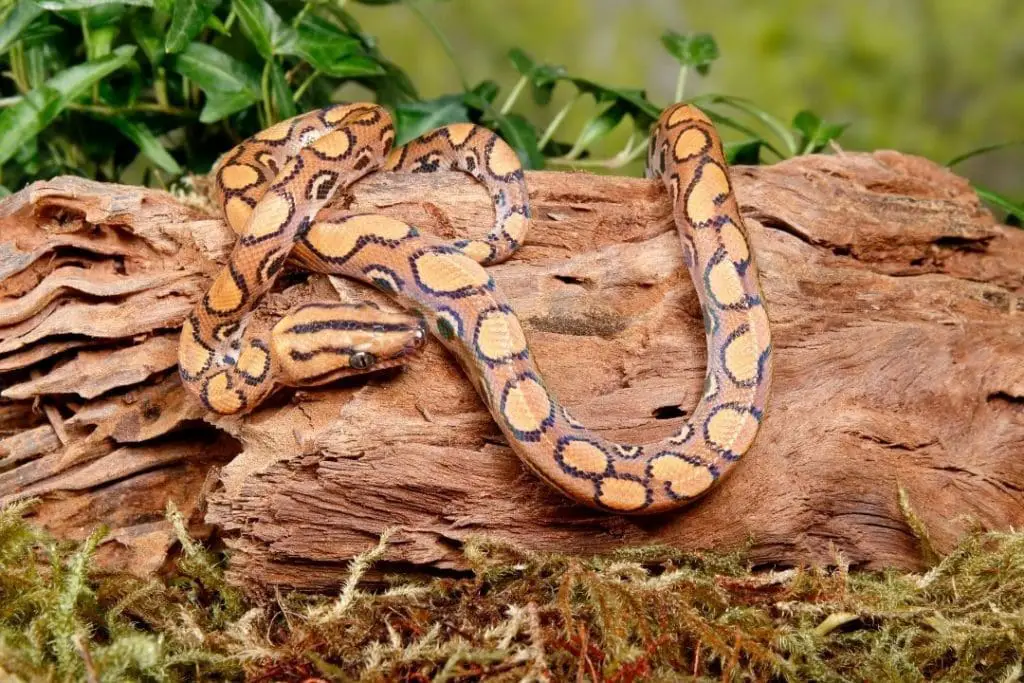
In the wild, these snakes rarely make it to old age. Most animals will rarely make it past 10 years old. This is because of the stress of finding food and surviving bad weather.
Older and larger snakes need more food. It can be harder for these snakes to find enough prey. Larger prey also brings a greater risk of injury.
Wild snakes have to suffer from any injuries they receive. If the animal gets an infection, it is unlikely to survive.
Other illnesses like respiratory infections can also kill a wild snake. Parasites can harm a snake and make it harder for them to survive.
Pests like ticks and mites can weaken a snake. Internal parasites can steal vital nutrients or even leave a snake unable to eat at all.
Predators are also a major danger for these terrestrial snakes. All of these make wild snakes unlikely to reach old age.
Many wild snakes do not even make it to adulthood. Young rainbow boas are common prey for many animals in their native range.
Even animals that reach sexual maturity at the age of around 3 years rarely make it past this point.
Since this species is ovoviviparous, the female will carry between 12 and 25 babies at once. This can slow her down and make her a bit more vulnerable to predators.
In Captivity
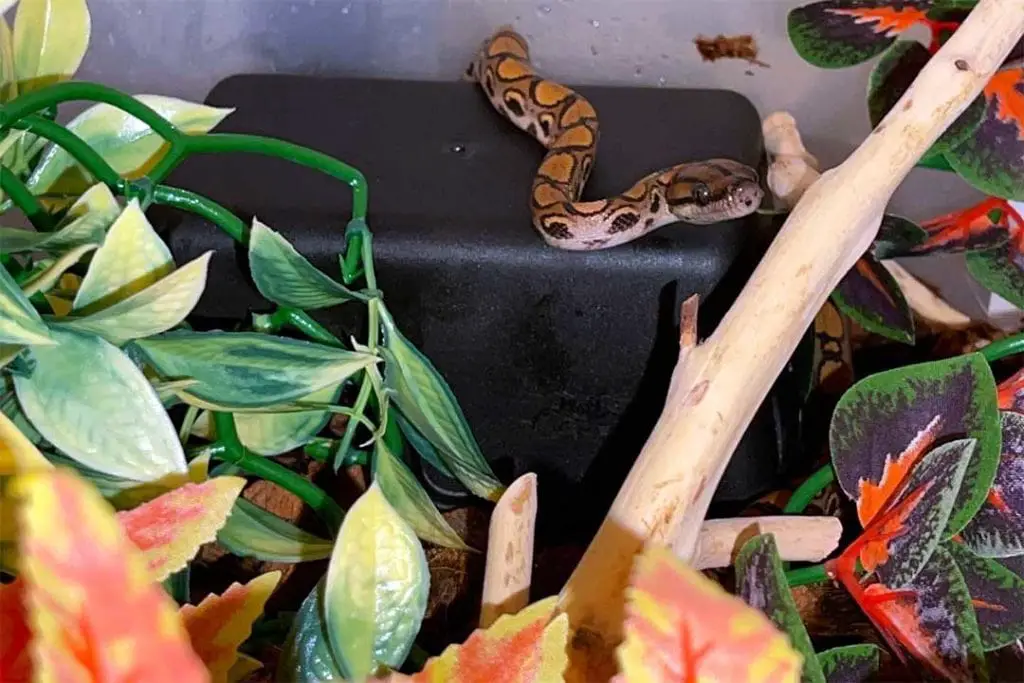
On average, a Brazilian rainbow boa will live for over 20 years. There have been reports of this species living for nearly 30 years with the proper care.
This isn’t an easy task, since brazilian rainbow boas are a bit harder to care for than other commonly kept pet snakes. You need to set up the perfect habitat and keep up on veterinary care.
You need high humidity for this species. If your snake is kept in a drier habitat, it will suffer from dehydration and poor shedding.
This can stress out your snake and seriously cut down on its lifespan. Proper prey is also important. Your rainbow boa should be kept on a strict diet so it doesn’t get too obese.
Obesity in boas can make them struggle to breathe and suffer from extra stress on their organs. Sticking with properly sized prey fed every other week will help keep an older snake from gaining too much weight.
You should also avoid live prey if at all possible. Live prey is much more likely to injure your snake. The injuries live prey can leave are a major infection risk.
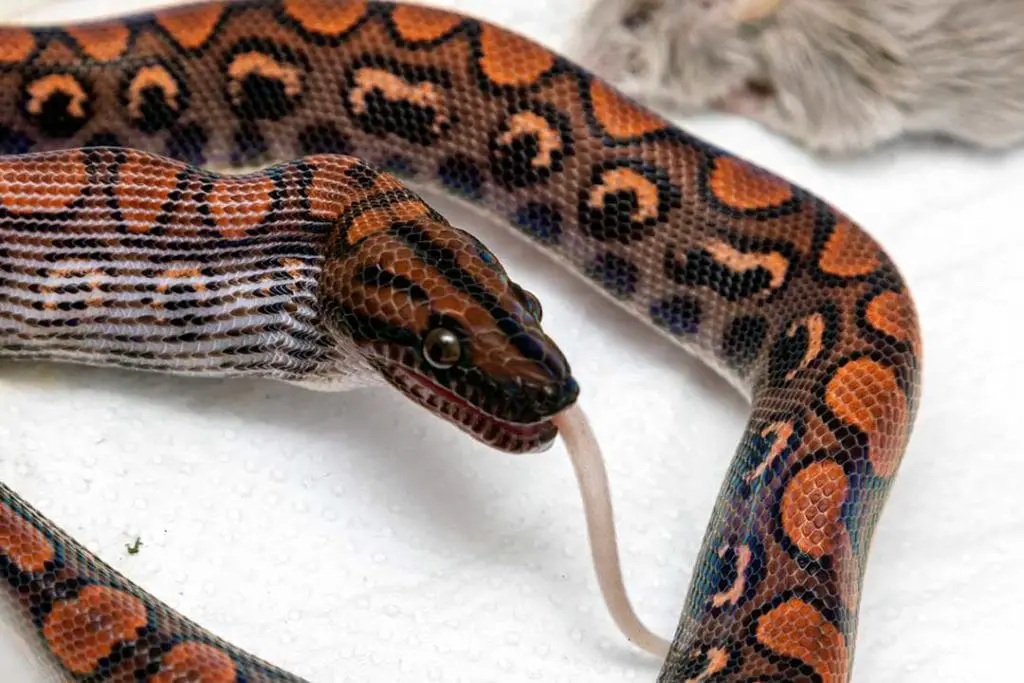
Infections and injuries are a major issue for captive snakes. It is easy to miss the signs of illness in snakes. If you are not experienced with snakes, it can be easy to miss the subtle signs of a problem.
If you do not handle your snake often, you can miss subtle signs like changes in the color of the skin or odd breathing.
If you are not careful with sanitation and quarantining new snakes, your rainbow boa is at risk of parasites and disease.
A new snake should be kept in strict isolation to make sure it can’t pass anything to your other animals. Mites and ticks can infect captive snakes.
This is particularly true of wild-caught animals. One infected animal can spread the pests to the rest of your pets.
Internal parasites can come from live prey or from poor-quality frozen prey. Some parasites can kill your snake, so you need to be careful.
Another factor is the enclosure.
A good enclosure needs to offer plenty of space for your snake. Exercise and mental stimulation are important for the health of captive animals.
Exercise helps keep snakes healthy and will make your snake have a longer and healthier life. You should try to offer plenty of space and offer levels for your snake to explore.
It is also a good idea to change up the decorations every few months to give your snake a change of pace.
This can help keep your snake active even as it ages since it will want to explore the changes you have made.
Signs of Aging
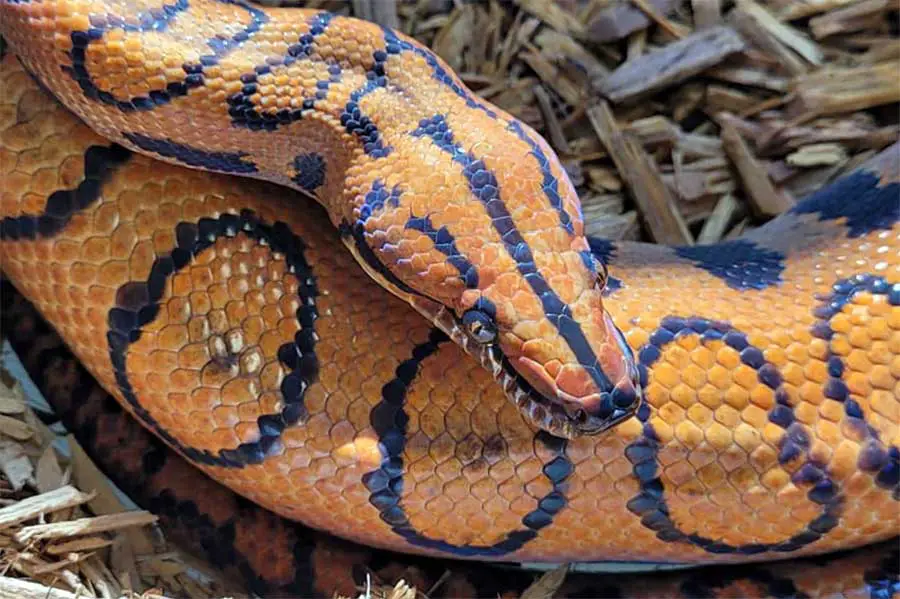
It isn’t easy to tell when a snake has reached old age. Snakes do not show signs as a mammal would. If you acquired an older rainbow boa, you may not know its exact age.
Here are some signs of an elderly animal.
Most older snakes are very long and thick. This is partly because snakes keep growing slowly for their whole life.
Rainbow boas may not be able to breed after about 15 years of age. If your snake has bred before and suddenly can’t, it is likely reaching old age.
Most snakes will slow down with age as well. You may see duller colors and less frequent shedding. Older snakes will frequently go on feeding strikes more frequently.
Snakes that have reached the end of their life will also refuse to eat and may not move much anymore. Your vet will likely be able to tell you if your snake may be at the end of its life.
If you have kept up with regular vet visits throughout your pet’s life, your vet can use the results to tell if your snake is just old.
If there are no obvious signs of illness to explain any behavioral changes, it may just be your Brazilian rainbow boas time.
Conclusion
Brazilian rainbow boas live for longer than many common pets. Like most snakes kept in the pet trade, they can easily live for over 20 years with proper care.
Take good care of your snake and take it to a reptile vet at least once a year.
This will help your pet live for as long as possible.
If you have a rainbow boa, be sure to leave a comment below with your snake’s age. If you have any questions, be sure to leave them as well.
